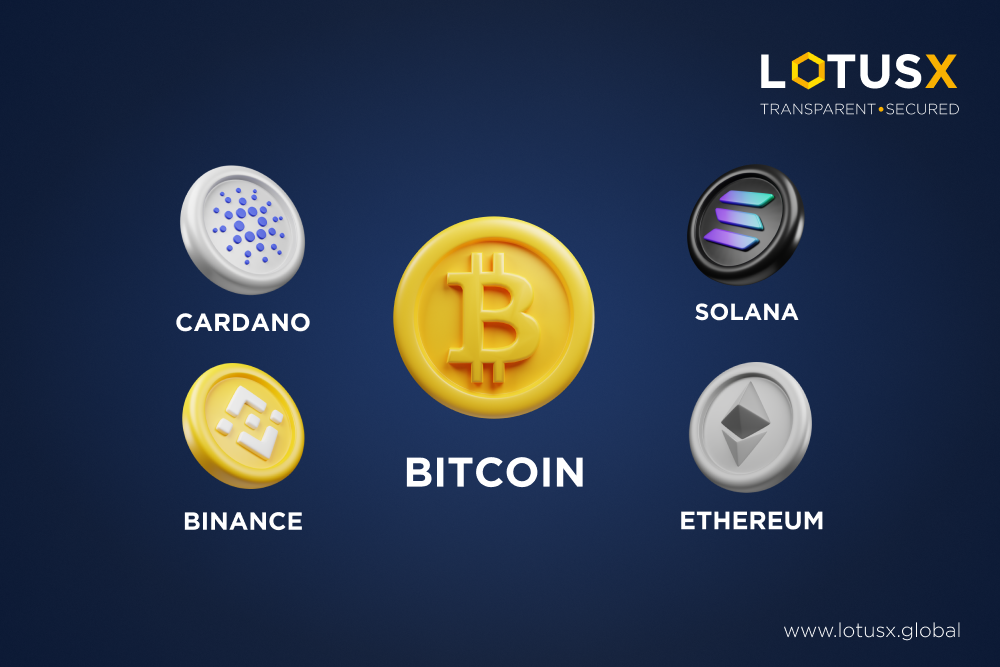Cryptocurrencies have taken the world by storm, but how do they work? This guide explains the technology behind cryptocurrencies, including PoS, PoW, mining, trading, storing, wallets, and transactions.
How Do Cryptocurrencies Work?

Cryptocurrency is decentralized digital money based on blockchain technology and protected by cryptography. Cryptocurrency is a digital log that uses encryption to check transactions and ensure they are safe and secure. With cryptocurrency, the users share access; all information is clear, can’t be changed, and is available immediately.
Cryptocurrency works independently of the banking system using different currencies or tokens. When you own cryptocurrency, you must know you don’t own anything tangible. What you own is a key that enables access to your crypto tokens. With Bitcoin being the key player, here is how cryptocurrencies work:
Mining
Mining is a process of generating new digital coins. Cryptocurrencies are generated through a complex process called “mining.” It is also a way to verify new crypto transactions. In the case of BTC, just as traditionally, miners dig to get gold; similarly, miners solve mathematical puzzles on specially equipped computers and get rewarded with Bitcoin in exchange. It is estimated that it takes 30 days to mine a Bitcoin.
Buying, selling, and storing
Investors can trade cryptocurrencies from platforms like LotusX with a user-friendly interface using central exchanges, brokers, or individual currency owners. You can buy a cryptocurrency and store it in digital wallets, which may be “hot” or “cold.” A hot wallet connects to the internet, making it easier to transact. However, it is more prone to theft and fraud. A cold wallet is safer but makes it harder to have transactions.
Transacting or Investing
Cryptocurrencies such as Bitcoin are relatively easy to transfer from one digital wallet to another with the help of a Smartphone. Here is how to use Crypto:
- To purchase goods or services.
- Exchange them for cash.
- Trade them.
An easy way to use Bitcoin for purchases is through debit-card-type transactions. Similar to ATMs, these cards can also withdraw cash. One can convert cryptocurrency into cash through peer-to-peer transactions or bank accounts. P2P transactions are the ones that are incurred through UPI, Paypal, Google Wallet, etc.
Proof-of-stake and Proof-of-Work

When it comes to understanding the working of cryptocurrency, it is important to know the basics of two very important consensuses: Proof-of-Stake and Proof-of-Work.
What is Proof-of-Stake?
Proof-of-stake is an algorithm that decides who confirms the next block depending on how many coins one holds. The user who authenticates is chosen based on their “stake” in the blockchain, meaning the number of tokens they can add to the pool if selected to authenticate. You must note that:
- The validator receives no block reward. However, the network fee is his reward.
- PoS randomly selects miners to add and confirm new blocks to the blockchain.
- Initial Investment requires buying a stake and building a reputation.
- It can handle monopoly.
- It is more cost and energy efficient.
What is Proof-of-Work?
PoW is built on the concept of mining. It is more competition driven. Simply put, the miners must compete for the first position to solve the complex puzzle and generate a new block to earn new coins as rewards. Here are some key points:
- PoW reduces the risk of a cyber attack on the system by nearly 51%, but it’s back-breaking hard work.
- One must provide Proof of past work before proposing a new block.
- It limits the number of new blocks of data generated.
- Initial Investment requires the purchase of hardware.
- Monopoly may increase over time.
- Easy-to-verify solutions enable easy verification and trustworthiness of transactions.
- Highly expensive in terms of cost, energy, and environment.
We have discussed the concepts of Proof-of-Stake (PoS) and Proof-of-Work (PoW). While these are two different mechanisms, both authenticate crypto transactions. Both PoS and PoW are essential elements of blockchain technology and security.
Current Utility of Cryptocurrency
It is worth learning whether cryptocurrency’s popularity has been fruitful or hollow over the years. While there are still controversies regarding cryptocurrency’s ability to replace institutional cash, the new asset class has wide utility.
- As a mode of payment
Initially, cryptocurrencies like Bitcoin had little to no value to merchants for transactions or as payment in return for goods and services. However, with time, it has gained worldwide acceptance in various industries and businesses, like restaurants, jewelers, flights, and apps. Giants like Goldman and Sachs, Tesla, Microsoft, and Apple have all agreed with cryptocurrency as a viable payment mode.
What can you purchase with Cryptocurrency?
Cryptocurrency like Bitcoin was conceived to make daily transactions easy, from buying a cup of coffee to real estate. The idea has not materialized yet. However, a wide range of products and e-commerce sites use crypto as a mode of payment.
1. Luxury brands like Patek Philippe, Rolex, etc.
2. E-commerce sites like Shopify and Home Depot.
- Investment
Bitcoin, followed by Ethereum, Binance, Polygon, etc., are a few of the most lucrative investment opportunities. With wide acceptance and supreme value, appreciation is dynamic and can be an excellent investment for capital expansion. It is important to note that a change in popularity or news can result in enormous price fluctuations.
Financial Thoughts!
Cryptocurrencies are highly volatile, so starting small and diversifying your investments is recommended. As a beginner, seek expert advice and gradually grow your expertise by studying and researching the subject. The market is full of scams. Hence, using authorized platforms, like LotusX, is essential.




